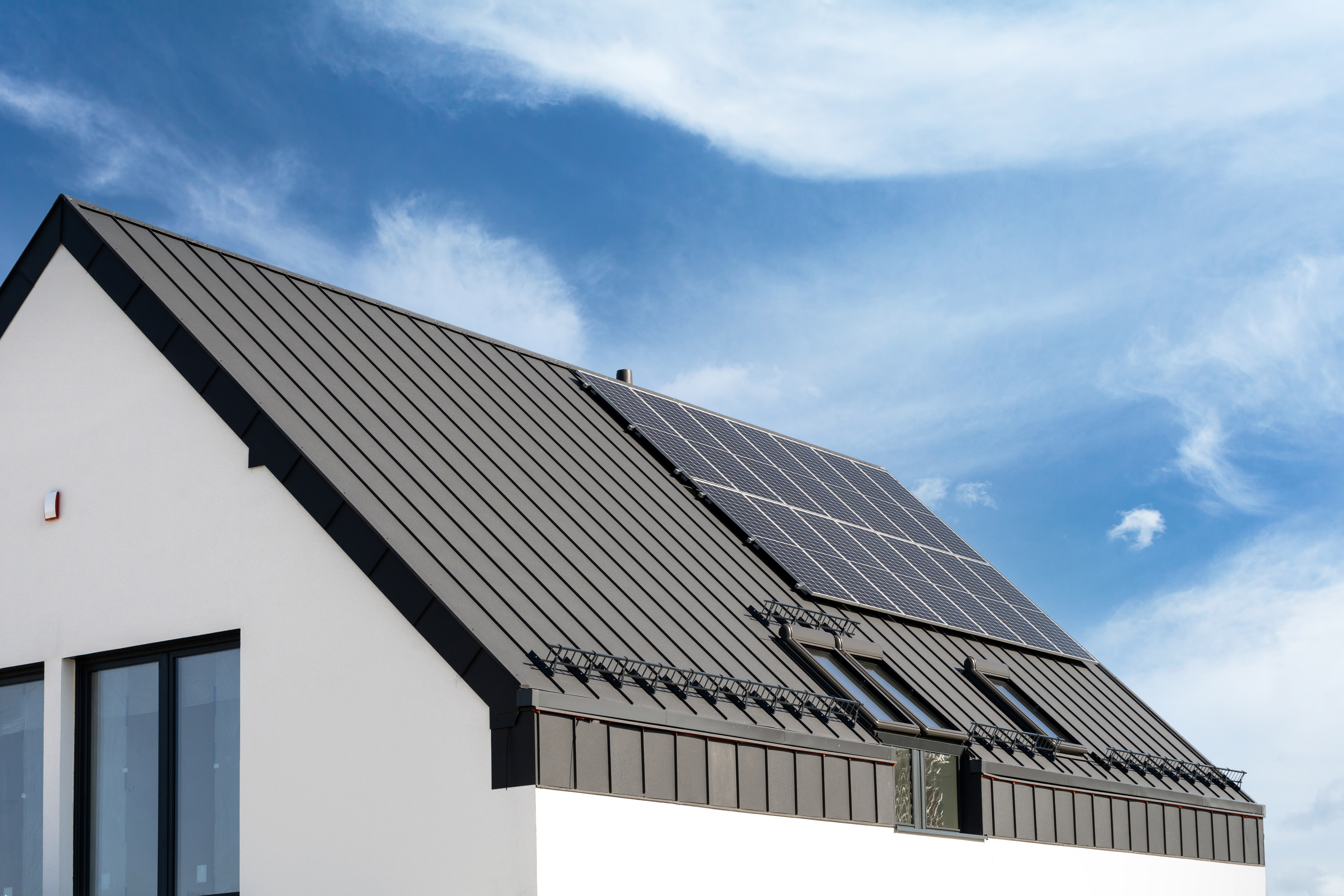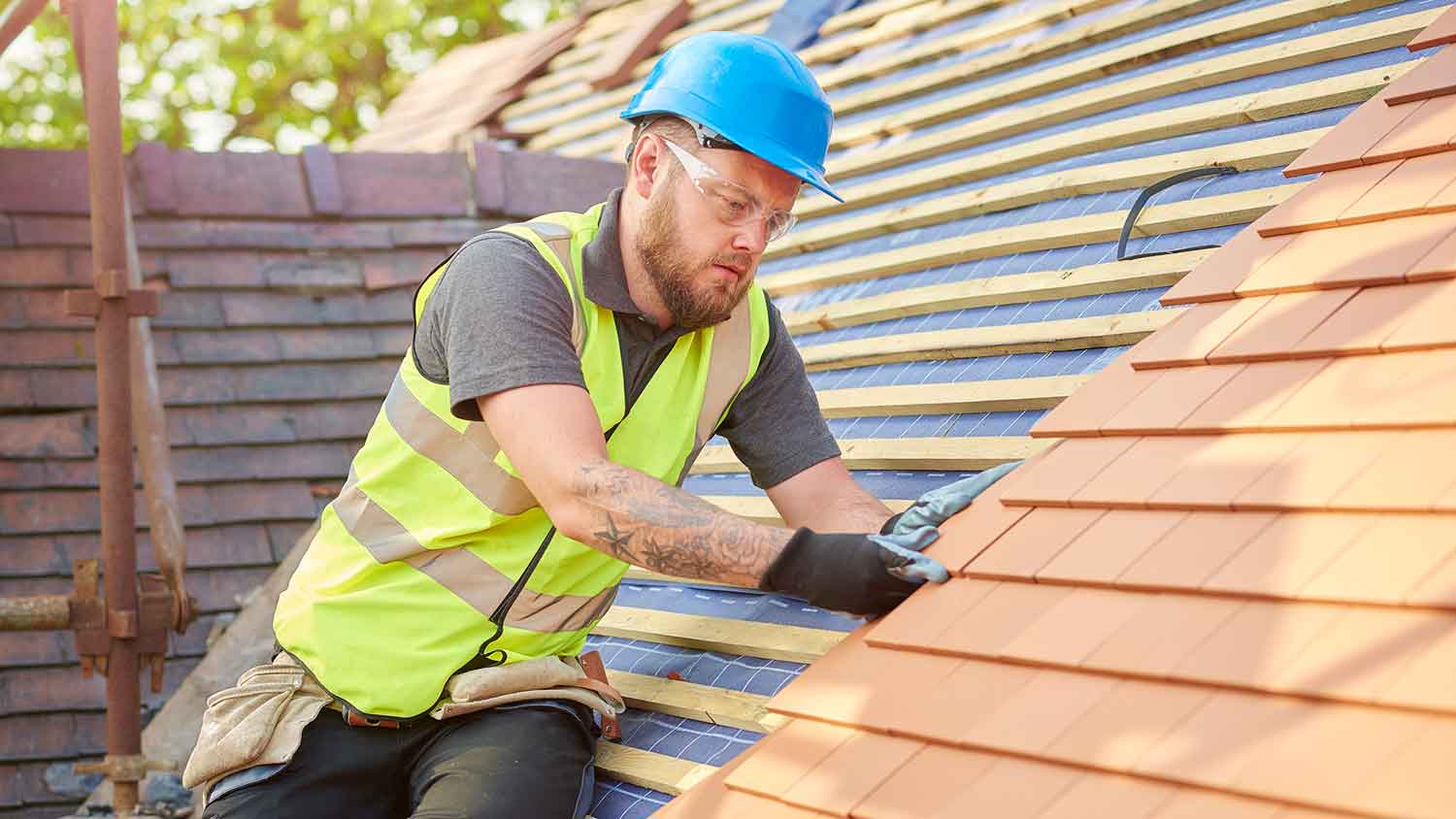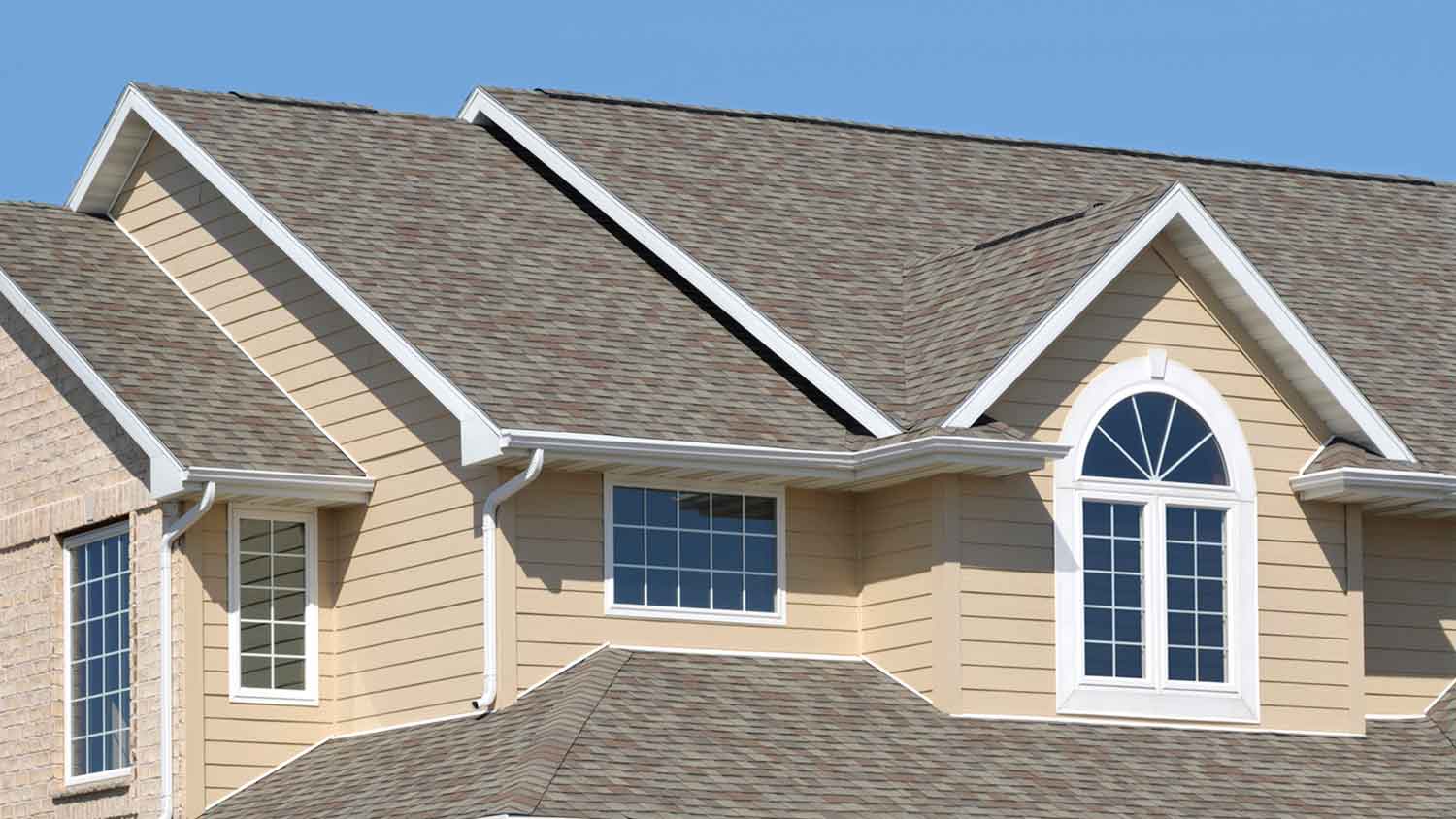
A metal roof can defend your home against Ohio’s varying weather conditions. Learn how much a metal roof costs in Columbus, OH.
Pick the right roof for your environment


Tile roofs are highly durable, long-lasting, and aesthetically pleasing
Shingle roofs are more cost-effective and versatile for a range of roof styles
Asphalt tile roofs are the most popular option across the country
Tile roofing can increase your curb appeal and home insulation
The best way to combat decision fatigue when choosing the best roof materials is to break down the key differences between tile and shingle roofs. The two most popular categories include all our roofing favorites, from asphalt shingles to terracotta tiles. Why do some houses benefit from one over the other? Let's place them head to head to find out.
When you envision a roof in the U.S., you'll likely picture an asphalt shingle roof with flat, thin, overlapping rows of roofing materials. Shingle roofs are highly versatile, durable, and often budget-friendly. The major types of roof shingles include a range of asphalt varieties, laminated fiberglass, metal, and wood. Most shingles are relatively easy to install and last between 20 and 50 years on average.
Tile roofs likely bring to mind the deep tan terracotta often spotted in the southwest and across Europe. Other types of roof tiles include those made of concrete, slate, metal, and composite. Tiles sit next to one another side by side in even rows, are highly durable, and can last over 100 years. While quite heavy and difficult to install, they are the gold standard against even the most extreme weather.
The many factors that play into choosing a roofing material may surprise you, such as durability, cost, style, and the climate in which you live. Many homeowners choose asphalt, but there are various types on the market. A roofer can advise you on the best materials for your home and region.

Tile roofs show off some of the toughest materials and are individually layered to encourage airflow, impact protection, and rain resistance. As mentioned above, the most common options include clay terracotta and concrete. Contractors lay the roofing tiles individually side by side in overlapping rows. The result is an eye-catching, durable, and classic look, no matter the material. That being said, installation takes much longer—up to several days—and requires specialized roof sheathing to hold the heavier weight of the tiles.
| Pros | Cons |
|---|---|
| Increases curb appeal | Higher cost overall |
| Incredibly durable | Longer installation time |
| Can last over a century | Difficult to repair |
| Highly energy-efficient | Very heavy |
| Pest- and fire-resistant | Not ideal for all climates |
Best for:
Roofs in temperate and warm climates
Homes that can withstand heavy roofing materials
Homes in fire-prone areas
Home styles that benefit from classic terracotta look
There's no question that there are both pros and cons of tile roofs, but the pros are worth highlighting for their longevity alone. Tile roofs can last over 100 years when maintained properly, offsetting the upfront investment in the long run. They can insulate your home from both hot and cold weather while also protecting against fire, pests, and rot. Last but not least, tile roofs can increase the style, curb appeal, and even resale value of your home.
Tile roofs are more expensive and harder to install than most shingle roofs, so it's best to consider your immediate needs before choosing. In some climates, extreme cold can cause terracotta tiles to crack due to the more frequent freeze-and-thaw cycles. Heavy snow will also add to the weight on a roof, making tiles implausible in some regions. Additionally, contractors must take extra care when walking on terracotta, as they are prone to breaking.

A shingle roof is the most common variety across the country, encompassing asphalt shingles as well as metal, composite, laminated, wood, and concrete. In many cases, contractors install shingles in overlapping patterns, often as three tabs at a time. The process protects and insulates your roof for less money and with less weight.
| Pros | Cons |
|---|---|
| Lower cost of materials and labor | Shorter longevity |
| Many style options | Harder to maintain |
| Lightweight | Not always pest and fire-resistant |
| Highly versatile | Lower insulation |
| Easy to install and repair | Lower ROI |
Best for:
Budget-conscious homeowners
All climates across the U.S.
Roofs with a range of slopes
Complex roofs with multiple dormers
Perhaps above all else, roofing costs put shingles ahead of tile in any comparison. Shingle roofs can cost less than half of a tile roof, both in terms of materials and installation. They are also more versatile for a range of roof styles and weigh far less than most tiles. While there aren't quite as many options as tiles, there are still plenty of colors, textures, and shapes to choose from.
Shingles will not only last less time than tiles but also require more frequent maintenance and repairs. Shingles are more prone to decay, moss, and lichen buildup. You may lose shingles in high winds and extreme rain, leading to more frequent replacement. Depending on the varieties, shingles may not insulate your home as well against hot and cold as tiles, though there are some high-performing varieties.
Your roof is one of the most important long-term investments for the safety and stability of your home. Compare tile and shingle roofs from every angle before making a decision.
Tile roofs have an iconic style that elevates nearly every home style, from colonials to Tudors. Terracotta tile is both eye-catching and timeless, while concrete tiles come in a wide range of hues. That being said, some homeowners will simply prefer the classic look of asphalt shingles, which make less of a splash than tiles.
Tile roofs win this category with a few caveats. In most cases, all types of roof tiles last longer and stand up stronger against high winds, ice, and rain. It's important to note, however, that clay terracotta tiles can break during installation and when walked on. It's best to chat with a local roofing contractor about the most resilient material for your home and climate is best.
Homeowners spend far less on shingle roofs compared to tiles. Shingles cost between $3 and $10 per square foot on average, while tile roof costs range from $7 to $25 per square foot. You will also pay far more for labor when installing tile roofs, as both the time and expertise require a higher fee.
While neither job is an ideal DIY, installing shingles is far easier than installing tiles, even for roofing contractors. Asphalt shingles, for example, often come in three-tap strips that are easier to transport, adhere, and adjust. Installing roof tiles is more complex due to their weight, the thicker roofing underlayment, and the nails required to secure them.
If a storm whips off a corner of your roof, it's far easier to replace shingles than tiles. Repairing shingle roofs is also easier and less expensive for professionals. Shingled roofs are easier to access and match the material to the existing material.
Tile roofs naturally require less upkeep since they are not prone to pests, mold, or moss. When you need to clean your roof, it is also easier to wash strong materials such as clay and metal than wood or asphalt.
Tile roofs will last longer in most climates than shingle roofs. You'll spot terracotta and stone tiles on historic homes over 100 years old with minimal repairs over time. Keep in mind that roofs in some climates—such as those with excess snow and freezing temperatures—may do better with shingles.
The natural properties of concrete, stone, and clay will provide more robust insulation benefits than shingles. However, many types of roof insulation can increase your roof's insulation strength—or R-value—no matter the material.
As is often the case, the more you spend upfront, the higher the ROI in the long run, but this depends on many factors. You should always choose the best option for your budget, long-term plans to resell your home, and local climate. Opting for tile simply to increase curb appeal is only worth it in some cases. It's always best to make a personalized choice for your unique home.
From average costs to expert advice, get all the answers you need to get your job done.

A metal roof can defend your home against Ohio’s varying weather conditions. Learn how much a metal roof costs in Columbus, OH.

Dealing with a visibly damaged roof or leak? Learn about roof repair costs in Columbus to see how much you’ll need to budget for a permanent solution.

Learn about roof replacement costs in Columbus and what factors are at play to budget accurately and make sure you’re getting a fair price.

Painting a metal roof helps it look great and last for decades. Use this guide to learn how to paint a metal roof, whether you DIY the job or hire a pro.

If you’re upgrading your roof with stone-coated steel, you should be aware of the total project cost. Learn what will impact your final stone-coated steel roofing costs.

Furring strips support your metal roof and improve ventilation, but only if spaced correctly. Here’s the ideal spacing of furring strips for metal roofs.